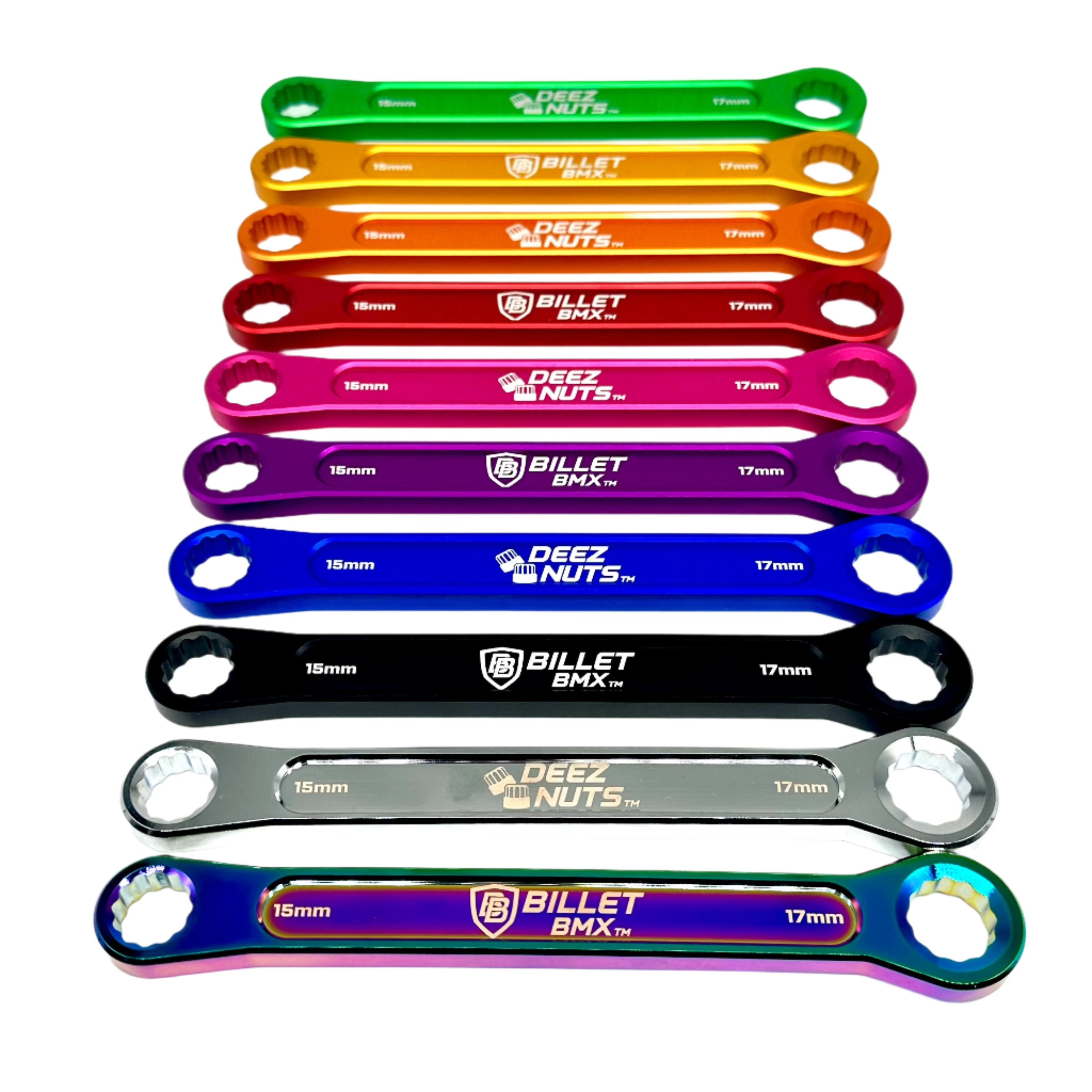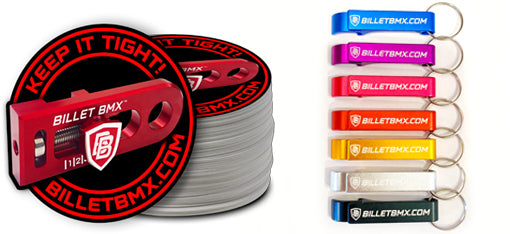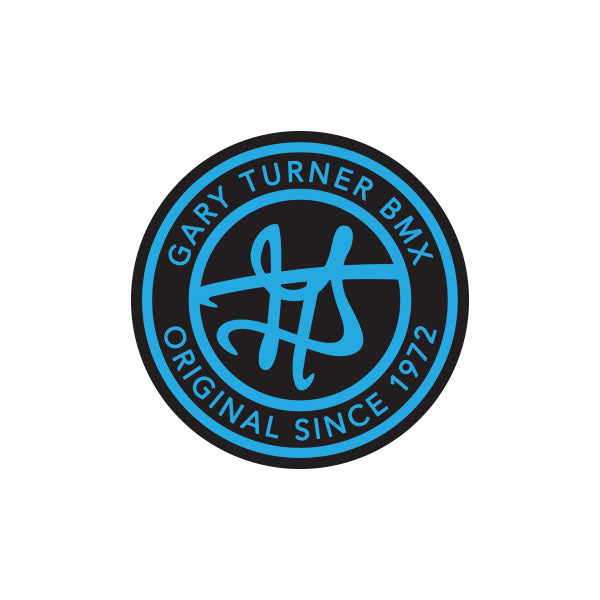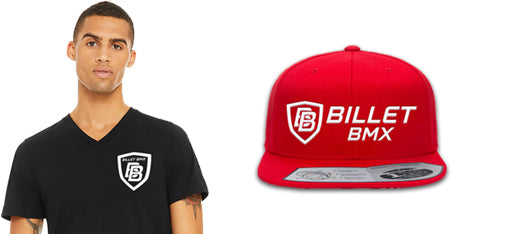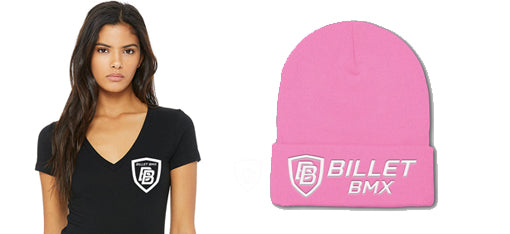
Here's an overview:
- Introduction to BMX Bike Axle Nut Thread Sizes
- Understanding Different Types of BMX Bike Axle Nut Thread Sizes
- How to Measure BMX Bike Axle Nut Thread Sizes
- Common BMX Bike Axle Nut Thread Sizes and Standards
- Factors to Consider When Choosing BMX Bike Axle Nut Thread Sizes
- Tools and Equipment for Dealing with BMX Bike Axle Nut Thread Sizes
- Maintaining and Replacing BMX Bike Axle Nut Thread Sizes
- Troubleshooting and Common Issues with BMX Bike Axle Nut Thread Sizes
- Upgrading and Customizing BMX Bike Axle Nut Thread Sizes
Introduction to BMX Bike Axle Nut Thread Sizes
When it comes to BMX bikes, every component plays a crucial role in ensuring optimal performance. One often overlooked component is the BMX axle nut. The size of the axle nut thread can have a significant impact on various aspects of your ride, including chain tension, overall stability, and ease of maintenance. In this section, we will introduce you to the world of BMX bike axle nut thread sizes and their importance.
Understanding the Benefits of BMX Chain Tensioners
Before delving into axle nut thread sizes, it is crucial to understand the significance of proper chain tension in a BMX bike. BMX chain tensioners are essential components that help maintain the tension of the chain, minimizing the risk of chain slippage. By using chain tensioners, you can improve performance, power transfer, and ensure smooth pedaling.
Axle Nut Thread Sizes and their Importance
The axle nut thread size refers to the diameter and pitch of the thread on the axle nut. BMX bikes typically come with either 3/8" or 14mm axle nuts. The choice between these two sizes depends on the frame and fork design, as well as personal preference.
3/8" BMX Axle Nut Thread Size
The 3/8" axle nut thread size is commonly found on BMX bikes designed for freestyle riding and street riding. This size offers a balance between strength and weight, making it suitable for riders who prioritize maneuverability and versatility. It is important to note that 3/8" axles are not as strong as their counterpart, the 14mm axles. There are two thread sizes in 3/8" axles most popular is 3/8"x26tpi and the 3/8"x24tpi is more rare.
14mm BMX Axle Nut Thread Size
The 14mm axle nut thread size is more commonly found on BMX bikes designed for racing and high-intensity riding. The larger diameter provides increased strength and durability, making it ideal for riders who put their bikes through rigorous and demanding situations. Additionally, the 14mm axle nut thread size is often accompanied by wider dropouts, which further improves stability and stiffness.
Tips for Choosing the Right Axle Nut Thread Size
Selecting the appropriate axle nut thread size for your BMX bike depends on various factors, including your riding style, frame design, and personal preferences. Here are a few tips to keep in mind:
- Consult your BMX bike manufacturer's axle nut application guide for specific recommendations.
- Consider the benefits of BMX chain tensioners in improving performance and minimizing chain slippage.
- Take into account the bicycle torque specs recommended by the manufacturer to avoid overtightening or undertightening the axle nuts.
By considering these factors and understanding the differences between axle nut thread sizes, you can make an informed decision that suits your riding needs and enhances your overall BMX experience.
Understanding Different Types of BMX Bike Axle Nut Thread Sizes
When it comes to BMX bike axle nuts, there are several different thread sizes that you need to be aware of. These thread sizes determine the compatibility of the axle nuts with different BMX frames and forks. Understanding these thread sizes is essential when it comes to replacing or upgrading your axle nuts.
- 3/8" x 26TPI thread: This is the most common thread size found on BMX bikes. It is used on both front and rear axles. The "3/8" refers to the outer diameter of the axle, while the "26TPI" signifies the number of threads per inch. This thread size is compatible with most BMX frames and forks.
- 3/8" x 24TPI thread: This a more rare thread size found on BMX bikes. It is used on both front and rear axles. The "3/8" refers to the outer diameter of the axle, while the "24TPI" signifies the number of threads per inch. This thread size is compatible with most coster brake hubs when you pedal backwards it slows the bike down.
- 14mm x 1.0 thread: This thread size is typically used on rear axles for BMX bikes. The "14mm" refers to the outer diameter of the axle, while the "1.0" represents the thread pitch. This thread size is known for its strength and durability, making it popular among riders who perform heavy tricks and jumps.
- 10mm x 1.0 thread: This thread size is commonly found on older BMX bikes, especially those with freestyle frames. The "10mm" refers to the outer diameter of the axle, while the "1.0" represents the thread pitch. While less common than the 3/8" and 14mm thread sizes, some riders still prefer this size for its lightweight and responsive feel.
It is important to note that not all BMX frames and forks are compatible with all thread sizes. Before purchasing new axle nuts, it is crucial to consult the manufacturer's specifications or refer to an axle nut application guide to ensure the proper fit.
Additionally, some BMX riders opt for using chain tensioners to improve performance and minimize chain slippage. Chain tensioners are devices that help maintain proper tension on the chain, ensuring smooth and consistent power transfer. They are available in various sizes and styles to accommodate different axle nut thread sizes.
In conclusion, understanding the different types of BMX bike axle nut thread sizes is essential for maintaining and upgrading your bike. Whether you are replacing worn-out axle nuts or looking to upgrade to a stronger thread size, knowing the compatibility of your frame and fork is crucial. Consult the manufacturer's specifications or an axle nut application guide to ensure the proper fit for your BMX bike.
How to Measure BMX Bike Axle Nut Thread Sizes
Measuring the axle nut thread sizes of your BMX bike is an important step to ensure correct fitment and compatibility with various components. Here is a comprehensive guide on how to measure BMX bike axle nut thread sizes accurately.
- Determine the Axle Diameter: The first step in measuring the axle nut thread sizes is to determine the diameter of the axle itself. Most BMX bikes are equipped with either 3/8-inch (9.525mm) or 14mm axles. The easiest way to determine the axle diameter is by referring to the specifications provided by the manufacturer. If this information is not readily available, you can use a caliper or ruler to measure the diameter directly.
- Count the Threads Per Inch (TPI): The next step is to count the threads per inch (TPI) on the axle. This will give you the pitch of the threads and is crucial in determining the correct size of the axle nut. Use a thread pitch gauge or a ruler with clearly marked increments to count the threads per inch accurately. For 3/8-inch axles, the common TPI measurements are 26 TPI or 24 TPI. For 14mm axles, the most common thread pitch is 1 or 14x1mm.
- Identifying the Correct Axle Nut Size: Once you have determined the axle diameter and tread pitch, you can now find the correct axle nut size. Axle nut sizes are typically specified using two numbers: the outer diameter (OD) and the thread pitch. For example, a common size for a 3/8-inch axle nut is 3/8-24, where 3/8" denotes the OD, and 24 signifies the thread pitch.
- Torque Specifications: Lastly, it is important to consider the recommended torque for the axle nut to ensure proper installation. Refer to the manufacturer's guidelines or the BMX bicycle torque spec chart for the specific torque values. Using a torque wrench is highly recommended to apply the correct torque consistently, preventing over-tightening or under-tightening of the axle nut.
By following these steps, you will be able to accurately measure the BMX bike axle nut thread sizes. Having the correct axle nut size ensures compatibility with various components such as chain tensioners, improving performance, and minimizing chain slippage. Additionally, it allows for proper maintenance and adjustment of your BMX bike, enhancing its overall functionality and longevity.
Common BMX Bike Axle Nut Thread Sizes and Standards
When it comes to BMX bike axle nuts, it's important to understand the various thread sizes and standards used in the industry. This knowledge will help you choose the right axle nut for your bike and ensure optimal performance and safety. In this section, we will discuss the most common BMX bike axle nut thread sizes and standards to help you make an informed decision.
- 3/8" x 26TPI: The 3/8" x 26TPI thread size is the most prevalent standard used in BMX bikes. It is often found on front axles and some rear axles. This thread size is compatible with most BMX hubs and is relatively easy to find replacement nuts for.
- 14mm x 1.0: The 14mm x 1.0 thread size is commonly used for rear axles on freestyle BMX bikes. This larger thread size provides better stability and strength for handling big jumps and tricks. It is important to note that this thread size requires a 14mm axle and hub to be compatible.
- 10 x 1.0: The 10mm x 1.0 thread size is not as common as the 3/8" or 14mm sizes, but it is still used in some BMX bikes. It is typically found on race-specific bikes and may require a specific axle and hub to match.
It's worth mentioning that some BMX bikes use a combination of thread sizes, with a 14mm axle in the rear and a 3/8" axle in the front. This is often seen in freestyle bikes that require extra strength in the rear for landing big tricks.
Having knowledge of these common BMX bike axle nut thread sizes allows you to choose the right size when replacing a nut or upgrading your bike components. It's also crucial to follow the manufacturer's instructions and torque specifications to ensure proper installation and avoid damage to the threads.
Furthermore, understanding the benefits of using BMX chain tensioners can greatly improve the performance of your bike and minimize chain slippage. These tensioners come in different sizes and designs to match specific axle sizes and thread standards. For example, the Billet BMX Chain Tensioner Kit is compatible with a 20mm to 10mm axle and helps maintain proper chain tension for optimal power transfer.
Remember to consult your bicycle's owner manual or reach out to a bike mechanic for any specific recommendations or directions regarding axle nut sizes and standards for your particular BMX bike model.
Factors to Consider When Choosing BMX Bike Axle Nut Thread Sizes
When it comes to BMX bikes, axle nut thread sizes play a crucial role in determining the performance and functionality of the bike. The right thread size ensures proper fit and stability, allowing riders to push their limits without worrying about loose or damaged axles. Here are some factors to consider when choosing BMX bike axle nut thread sizes:
1. Compatibility
The first thing to consider is the compatibility of the axle nut thread size with your BMX bike. Different bike models and brands may require specific thread sizes, so it's important to refer to the manufacturer's specifications or consult an axle nut application guide. Using the wrong thread size can lead to improper installation, potential damage to the axle, and compromised safety.
2. Axle Diameter
The diameter of the axle also plays a significant role in determining the appropriate thread size. Typically, BMX bike axles come in 3/8-inch or 14-millimeter diameters. Ensure you select a thread size that matches the diameter of your axle to ensure a secure and balanced fit.
3. Chain Tensioners
If you plan on using chain tensioners on your BMX bike, it's essential to select axle nut thread sizes that are compatible with these accessories. Chain tensioners help maintain proper chain tension, improving performance and minimizing chain slippage. Some chain tensioners, like the billet BMX chain tensioner kit for Race Inc. frames, may require specific thread sizes, so it's crucial to consider this when choosing your axle nut.
4. Torque Specification
Another important factor to consider is the torque specification for your axle nut. Each thread size has a recommended torque range to ensure proper tightening without causing damage to the axle or threads. It's essential to use a torque wrench and adhere to the bicycle torque specs provided by the manufacturer to ensure precise and secure installation.
5. Personal Preference
Lastly, personal preference can also play a role in choosing the right axle nut thread size. Some riders may prefer a certain thread size based on their riding style, bike setup, or specific accessories they would like to use. It's crucial to consider your own preferences and needs when making this decision.
In conclusion, choosing the right BMX bike axle nut thread size is vital for the overall performance and safety of your bike. Consider factors such as compatibility, axle diameter, chain tensioner requirements, torque specifications, and personal preferences when making your decision. By taking these factors into account, you can ensure a secure and reliable connection between the axle and the frame, allowing you to fully enjoy your BMX riding experience.
Tools and Equipment for Dealing with BMX Bike Axle Nut Thread Sizes
When dealing with BMX bike axle nut thread sizes, it is important to have the right tools and equipment to ensure proper installation and maintenance. Here are some essential items that can help you effectively manage your BMX bike axle nut thread sizes:
- Axle Nut Application Guide: An axle nut application guide is an invaluable tool that provides information on the specific thread sizes and types of axle nuts used in BMX bikes. This guide will help you identify the correct thread size for your axle nuts, ensuring a proper fit and secure installation.
- Bicycle Torque Specs: To avoid damaging your BMX bike axle nut threads during installation, it is vital to use the correct torque specifications. Bicycle torque specs provide guidelines on the amount of torque required for various components, including axle nuts. By following these specs, you can prevent over-tightening or under-tightening the nuts, which can result in thread damage or loosening over time.
- BMX Chain Tensioners: BMX chain tensioners are useful accessories that not only help maintain proper chain tension but also play a role in axle nut thread size management. These devices allow for easy adjustment of the chain tension, ensuring optimal performance and minimized chain slippage. They come in different sizes, so it's essential to choose the right tensioner that matches your BMX bike's axle nut thread size.
- Billet BMX Chain Tensioner Kits: For those with a Race Inc frame with a 20mm to 10mm axle, a billet BMX chain tensioner kit is an ideal solution. These kits are specifically designed to fit this specific frame and axle size, providing a secure and effective way to manage your BMX bike's axle nut thread size. The billet construction ensures durability and longevity, making it a valuable investment for BMX riders.
Having the right tools and equipment for dealing with BMX bike axle nut thread sizes is crucial for proper installation, maintenance, and overall performance of your BMX bike. Investing in an axle nut application guide, bicycle torque specs, BMX chain tensioners, and billet BMX chain tensioner kits will help you ensure a secure and efficient ride, preventing any issues related to thread size mismatch or inadequate tensioning.
Remember to refer to the manufacturer's instructions and guidelines when using these tools and equipment to ensure proper usage and avoid any unnecessary damage to your BMX bike's axle nut threads.
Maintaining and Replacing BMX Bike Axle Nut Thread Sizes
Proper maintenance and regular inspection of the axle nut thread sizes on your BMX bike are crucial for optimal performance and safety. Over time, the threads on the axle nuts can wear down or become damaged, which can lead to issues such as loose wheels, poor alignment, and increased risk of accidents. This section will provide a comprehensive guide on maintaining and replacing BMX bike axle nut thread sizes to ensure smooth and trouble-free rides.
Importance of Maintaining Axle Nut Thread Sizes
Maintaining proper axle nut thread sizes is important for several reasons. Firstly, it ensures that the axle nuts are securely fastened to the axle, which prevents the wheels from loosening during rides. Loose wheels can compromise your control over the bike and increase the risk of accidents. Secondly, properly sized threads help in achieving adequate chain tension and alignment, which is crucial for smooth pedaling and efficient power transfer. It also helps in minimizing chain slippage, which can occur if the wheel is not properly aligned. Lastly, maintaining the correct thread sizes on the axle nuts promotes the overall longevity and durability of your BMX bike.
Inspection and Maintenance
Regular inspection of the axle nut thread sizes is necessary to identify any signs of wear or damage. Here are a few steps to follow:
- Visual inspection: Begin by visually examining the axle nuts for any visible signs of wear or damage. Look for worn-out threads, cracks, or stripping on the surface of the nuts.
- Thread gauge: Use a thread gauge to measure the diameter and pitch of the threads. Compare the measurements to the specifications provided by the manufacturer. This will help determine if the axle nut thread sizes are within the acceptable range.
- Tightening torque: Ensure that the axle nuts are properly tightened using the appropriate torque specifications provided by the bicycle manufacturer. Over-tightening can damage the threads, while under-tightening can lead to loose wheels.
Replacing Axle Nut Thread Sizes
If the axle nut thread sizes are found to be worn out or damaged beyond repair, it is crucial to replace them promptly to maintain the safety and performance of your BMX bike. Here are the steps to follow for replacing the axle nut thread sizes:
- Identify the correct thread size: Consult the axle nut application guide provided by the manufacturer to determine the correct thread size for your specific BMX bike model. This information is crucial to ensure compatibility and proper functioning.
- Tools: Gather the necessary tools such as a wrench, thread tap, and replacement axle nuts.
- Removal: Use the appropriate wrench to remove the damaged axle nuts from the axle. Be careful not to strip the remaining threads during removal.
- Thread cleaning: Use a thread tap or a thread chaser to clean the threads on the axle. This helps remove any debris, rust, or dirt that may have accumulated over time.
- Installation: Carefully screw in the replacement axle nuts onto the cleaned threads. Ensure that they are tightened to the recommended torque specifications provided by the manufacturer.
- Final inspection: After installing the new axle nuts, double-check their tightness and alignment. Ensure that the wheels are properly aligned and securely fastened to the axle.
By following these steps, you can safely and effectively maintain or replace the axle nut thread sizes on your BMX bike. Regular inspection and maintenance will help extend the lifespan of your BMX bike and ensure a smooth and enjoyable riding experience.
Troubleshooting and Common Issues with BMX Bike Axle Nut Thread Sizes
While understanding BMX bike axle nut thread sizes is essential for proper installation, it's also important to be familiar with common troubleshooting issues that may arise. By being aware of these issues, riders can effectively troubleshoot and resolve any problems they encounter. Here are some common issues and troubleshooting steps related to BMX bike axle nut thread sizes:
- Stripped Threads: One common issue that riders may face is stripped threads on their axle nuts. This can occur due to improper installation, excessive force while tightening, or worn-out nuts. To resolve this issue, it's recommended to replace the stripped nuts with new ones. Remember to use the correct thread size that matches your BMX bike's axles.
- Loose Axle Nuts: Another common problem is loose axle nuts, which can result in wheel wobbling or even detachment. Loose nuts can cause serious accidents, leading to injuries. To prevent this issue, it's crucial to ensure that the axle nuts are properly tightened before riding. Use a wrench or socket set to securely tighten the nuts according to the manufacturer's recommended torque specifications. Regularly check for tightness, especially after riding on rough terrains.
- Incompatible Chain Tensioners: Some riders may face compatibility issues when using chain tensioners alongside their BMX bike axle nuts. Chain tensioners are accessories that improve performance and minimize chain slippage. However, not all chain tensioners are compatible with every axle nut thread size. Therefore, riders must ensure that the chain tensioner they intend to use is suited for their specific axle nut thread size. For example, a billet BMX chain tensioner kit for a race-inc frame with a 20mm to 10mm axle will have different requirements compared to a different bike model.
- Incorrect Axle Nut Size: One common mistake that riders make is using the wrong axle nut size. Using an incorrect size can lead to improper installation and potentially cause damage to the axle threads. Always refer to the manufacturer's axle nut application guide or the bike's manual to determine the correct thread size for your specific BMX bike. This will ensure the axle nut is properly secured and minimizes the risk of potential issues.
In summary, troubleshooting and resolving common issues related to BMX bike axle nut thread sizes is crucial for maintaining the safety and performance of your bike. By being aware of potential problems like stripped threads, loose nuts, incompatible chain tensioners, and using the correct axle nut size, riders can ensure a smooth and enjoyable riding experience while minimizing the risk of accidents or bike damage. Remember to refer to the manufacturer's guidelines and regularly inspect and maintain your bike's axle nuts for optimal performance.
Upgrading and Customizing BMX Bike Axle Nut Thread Sizes
Upgrading and customizing the axle nut thread sizes on your BMX bike can greatly enhance your riding experience and improve the overall performance of your bike. By understanding the different thread sizes available and their respective benefits, you can make informed decisions when it comes to choosing the right axle nut for your bike.
One popular upgrade option is utilizing BMX chain tensioners. These small devices are designed to provide better chain tension, minimizing chain slippage and improving overall performance. When upgrading your axle nut thread size, it is important to consider the specific requirements of your chain tensioner.
For example, the Billet BMX Chain Tensioner Kit is compatible with a 20mm to 10mm axle. This means that you will need to choose an axle nut with a thread size that matches the requirements of this chain tensioner. By doing so, you can ensure a secure fit and optimal functionality.
Furthermore, when upgrading your axle nut thread size, it is essential to consider the torque specifications recommended by the manufacturer. Proper torque ensures that the axle nut is securely tightened without damaging the threads or compromising the overall integrity of the bike.
When customizing your BMX bike, axle nut thread sizes provide the flexibility to adapt to different components and accessories. For example, if you decide to change your BMX frame, you may need to adjust the axle nut thread size to ensure compatibility. By having access to a variety of thread sizes, you can easily adapt your bike to suit your specific needs.
Overall, upgrading and customizing the axle nut thread size on your BMX bike opens up a world of possibilities. Whether you are looking to enhance performance, accommodate different components, or simply customize your ride, having the right thread size is crucial. By understanding the benefits of various thread sizes, utilizing BMX chain tensioners, and adhering to proper torque specifications, you can unlock the full potential of your BMX bike and truly take your riding experience to the next level.
Conclusion and Final Thoughts
In conclusion, understanding BMX bike axle nut thread sizes is crucial for any BMX rider or enthusiast. The thread size of your axle nut determines the compatibility of your wheels, ensuring a secure and stable connection between the axle and the frame.
Throughout this comprehensive guide, we have covered the different types of axle nut thread sizes commonly used in BMX bikes, including 3/8" and 14mm. We have also discussed the benefits of BMX chain tensioners in improving performance and minimizing chain slippage.
One important aspect to keep in mind is the importance of using the correct torque when tightening the axle nut. Referencing the bicycle torque specs provided by the manufacturer is essential to prevent damage to the axle, frame, or other components.
Additionally, we have highlighted the potential use of a billet BMX chain tensioner kit for Race Inc. frames that converts a 20mm axle to a 10mm axle, providing versatility for riders who seek to modify their BMX setups.
By understanding the various axle nut thread sizes and their applications, riders can make informed decisions when selecting and maintaining their BMX bikes. This knowledge allows for greater compatibility with aftermarket parts and ensures the safety and performance of the overall setup.



